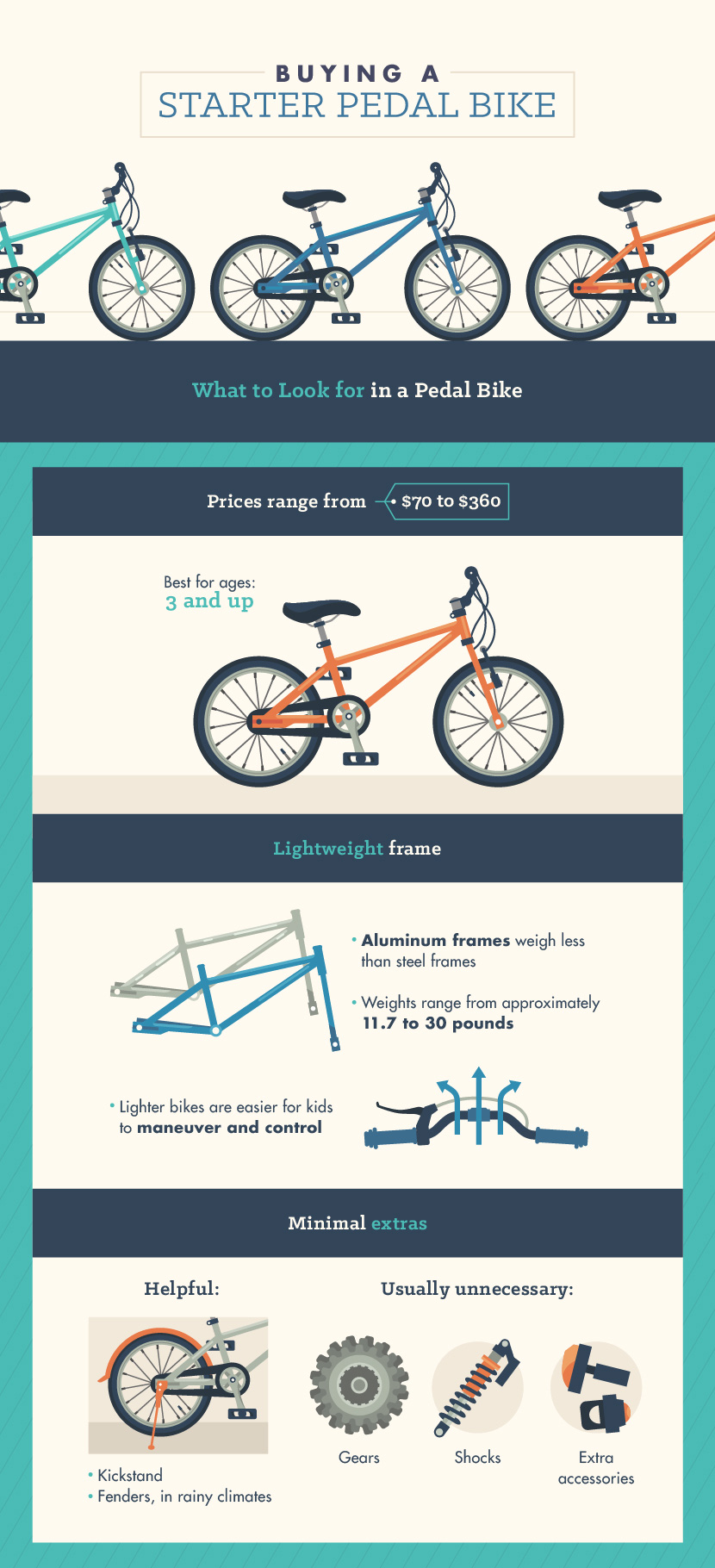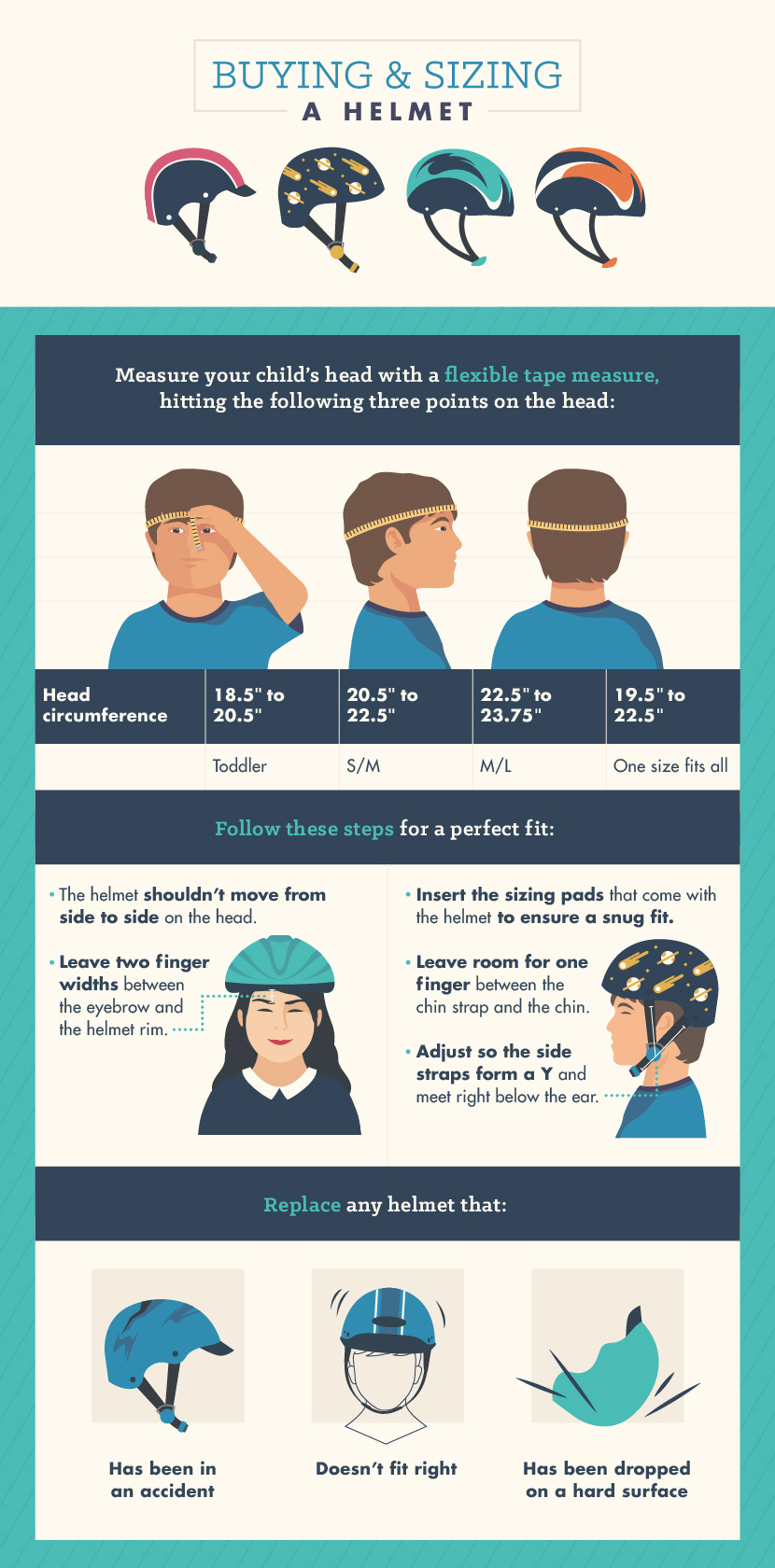Time to Toss the Training Wheels: How to Choose the Right Bike for Your Child
Are you ready to introduce your child to the fun and freedom of bike riding? Teaching a kid to ride a bike is a time-honored tradition, but it’s undergone a revolution in the past decade. Many kids today learn how to ride years earlier than children used to, and some skip training wheels altogether because of balance bikes. Read on to learn why a balance bike may be the right starter for your kid, and discover how to choose the right pedal bike at the right time.
The Balance Bike Revolution
For generations, most kids learned how to ride a bike first by riding a tricycle, then riding a bike with training wheels, and finally shedding the training wheels. But balance bikes are a popular alternative way to start kids on two wheels.
Balance bikes are bikes with no pedals, crank, or chain, and they’re not exactly new. The first bike ever invented in 1817 was a balance bike for adults called the walking machine.http://healthland.time.com/2011/09/30/bye-bye-training-wheels-hello-balance-bikes-learning-to-ride-a-bike-has-never-been-so-easy/ You don’t see many adults on balance bikes today, but kids are riding them at amazingly young ages. Toddlers as young as 18 months old sit on them and propel themselves forward with their feet. Most balance bikes have no brakes. Kids stop the bike by dragging their feet on the ground.
The question of whether to start a kid on a tricycle versus a balance bike or a bike with training wheels can be debated, but a child can ride all three if desired. Each provides a different kind of practice for eventually riding a pedal bike. Balance bikes teach kids to steer and balance, tricycles teach kids about pedaling, and training wheels help kids get comfortable using a coaster brake. Most importantly, they’re all fun. And if a kid skips riding one or two of them on the path to pedaling, that’s fine, too.

Balance bikes aren’t just for toddlers and preschoolers. They can help older kids, and even adults, transition to riding a pedal bike. If your child resists tossing the training wheels, a balance bike may be just the thing to ease frustration, decrease fear, and teach balancing and steering skills. You don’t actually need to buy a special bike for the purpose. A number of online tutorials explain how to make a DIY balance bike out of a bike you already have.http://www.instructables.com/id/Toddler-Balance-Bike-from-used-childs-bike/ If removing bike components is daunting, ask the mechanic at a local bike shop for help. The shop will probably charge a small fee to remove the pedals, crank, and chain.
Time for a Two-Wheeler
When it’s time for your child to transition to pedaling on two wheels, family bike rides are in your near future! But first, you need to find the right pedal bike for your budding rider. With hundreds of kids’ bikes on the market, selecting a two-wheeler can feel overwhelming. Here are the basics of what to look for in your child’s first pedal bike.

Setting a Budget
Kids grow quickly, so parents are often hesitant to spend much money on a starter bike. Many people buy inexpensive bikes at big-box or department stores.http://www.bicycling.com/bikes-gear/tips/hidden-costs-buying-department-store-bikes But if you want your child to love cycling, it may be worth investing in a higher-end bike. They’re usually lighter and made with higher-quality parts, meaning they’re more comfortable and easier for children to maneuver.
Moreover, these bikes are usually sold at bike shops where knowledgeable specialists assemble them, answer questions, offer warranties, and allow test rides. A number of online companies specialize in high-quality, lightweight bikes specifically built for kids, too.http://talesofamountainmama.com/2014/11/five-myths-kids-bikes-every-parent-needs-know.html
Consider these questions when setting a starter bike budget:
- Are high-end bikes available in the secondhand market? Check Craigslist, eBay, and local resale shops.
- How quickly will the child outgrow the bike?
- Can younger siblings ride the bike, too?
- How much will the bike resell for?
No matter where you buy a bike, make sure it’s well assembled and tuned before your child rides it. In a 2014 investigative news report, three out of four bikes tested in Orlando, Florida, big-box stores didn’t pass a basic safety inspection.http://www.clickorlando.com/news/store-assembled-bikes-fail-safety-inspection_20151105195406586https://sites.google.com/site/davethebikemechanic/4-1-what-to-look-for-at-the-big-box-store

Comparing Frame Designs
When it comes to frames, simple is usually best. For starter bikes, avoid odd frame designs and suspension forks, which usually just add weight with no additional function. Ideally, have your kid test ride several bikes in the correct size to see which feels most comfortable.
The geometry of a frame makes a difference, especially for the smallest bikes. Look for a bike with a longer wheelbase (the distance between the front and back wheels). The wheelbase of size-12 kids’ bikes can vary by as much as five inches. A longer wheelbase makes a bike more stable and easier to maneuver because the rider has a lower center of gravity.https://www.youtube.com/watch?v=--dOpGrS4W8
If you’re looking at several bikes, place them side-by-side. The one with the longest top tube – the bar a rider straddles when standing – is the one with the longest wheelbase. If you can’t tell by looking, compare the bikes’ technical specifications, which are available in stores and online. They usually include exact measurements for top tube lengths.http://www.twowheelingtots.com/what-to-look-for-when-purchasing-a-childs-pedal-bike/
Giving Kids a Brake
Starter bikes are outfitted with a coaster brake, hand brakes, or both. A coaster brake is a brake on the rear hub of the bike activated by pedaling backward. It’s considered safest and easiest for very young kids to operate because kids have more leg strength than grip strength. Thus, the Consumer Product Safety Commission requires size-12 bikes to have one. On the downside, coaster brakes can make it difficult for riders to start from a stop because a rider can’t freely pedal backward to get pedals into an optimum position for starting. And they make it hard for a rider to modulate speed because they’re either on or off.
Hand brakes are engaged when a child squeezes levers on the handlebars. The levers pull on cables that clamp a pair of pads onto the rim of the wheels. Some size-16 bikes and most size-20 bikes are outfitted with hand brakes because kids are usually ready to use them around the age of five. They offer the rider more ability to modulate speed than coaster brakes. And because the back wheel rotates in both directions freely, riders can easily get into an optimum position for starting. On the downside, hand brakes can be difficult for small hands to activate, and kids should be taught how to use them or they can be dangerous.http://bicycles.stackexchange.com/questions/6616/when-should-i-not-use-my-front-brakehttp://www.tikesbikes.com/pages/coaster-brake-vs-hand-brake Some high-end kids’ bikes feature hand brakes specifically designed for small hands. And some pair a coaster brake with a hand brake. Hand brakes may need to be repositioned so they’re easier for a rider to reach.http://bicycletutor.com/childs-hand-brake/

Conclusion
Introducing a kid to cycling is one of the most exciting moments of parenting. Encourage a successful start by choosing the right bike for your young rider.
Embed the article on your site

